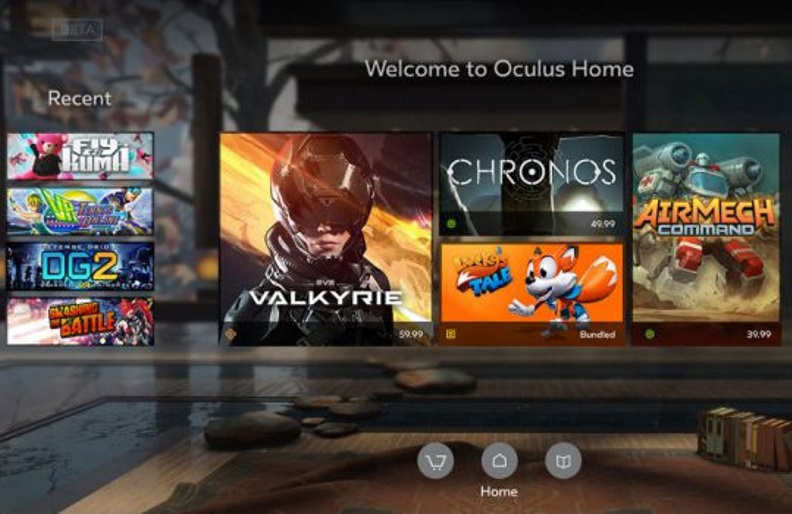Oculus may be aiming to become the content power house of virtual reality, but it’s still making efforts to play nice with other ecosystems.
In a new update rolling out today for PCs, Oculus has added support for launching off-platform titles, meaning most critically, that gamers will be able to access all the available Rift-compatible apps and games in-headset without having to navigate their desktop.
Oculus has long supported Valve’s Steam store in a less-than-seamless capacity, forcing users to navigate into settings and enable off-platform launching in desktop, but for VR users browsing in their headsets for titles they own, the only visible content has been what they’ve purchase from the Oculus store directly.
For Oculus there’s been the obvious desire to control the quality of content, but given the popularity of Steam this really was getting to be a frustration for users and promoting some fracturing of experience between what could be done on desktop as opposed to in-headset using Oculus software.
For many, Steam has proven a better home for desktop VR content as many PC gamers use the software to manage their regular PC games as well. Some titles on Steam boast support for multiple VR headset models allowing users to play them on the Oculus Rift of HTC Vive. The Vive, which remains the Rift’s most-direct competitor, runs on Valve’s SteamVR platform though HTC has been seeking to build up its own app store called Viveport as an alternative.
Oculus’s mobile platform for the Samsung Gear VR still will not allow users to play content from other mobile VR stores. The latest Galaxy phones were updated this week with support for Google’ Daydream mobile VR system which does similarly not play content purchased in the Oculus store.
In addition to bringing off-platform app launching, the new update rolling out today for Rift users brings a new social invite system called “Parties,” which allows up to four users to chat with each other across Rift apps while they’re in virtual reality.
This article was originally published by Techcrunch. Read the original article.
